Single-cell RNAseq of Angiotensin II-induced abdominal aortic tissue identifies aneurysm-associated cell clusters in C57BL/6J mice
- PMID: 40440080
- PMCID: PMC12203967
- DOI: 10.1042/BSR20241235
Single-cell RNAseq of Angiotensin II-induced abdominal aortic tissue identifies aneurysm-associated cell clusters in C57BL/6J mice
Abstract
Abdominal aortic aneurysms (AAAs) are life-threatening due to the rupture of aorta. Different vascular cell types are known to be involved in AAA development. However, whether any specific cell cluster plays a critical role during AAA formation is unknown. Angiotensin II (Ang II) infused mouse AAA models are commonly used to study the development and progression of AAA. We here investigate the incidence of AAA at different ages or different doses of Ang II in C57BL/6J mice. There was no AAA formation at a concentration of 1.44 mg/kg/day or 2.16 mg/kg/day at the age of 14 weeks. At the age of 20 weeks and 32 weeks, the incidence of AAA was 18.2% (6/21) and 57.1% (4/7), respectively, with a concentration of 1.44 mg/kg/day. Using single-cell RNA sequencing, we found that increased clusters of monocytes and neutrophils, macrophages, T cells, and B cells were the typical changes in AAA. A special cluster transformed from endothelial cells (malignant ECs) was identified, in which genesinvolved in lipid metabolism, including Cd36, Lpl, Gpihbp1, Fabp4, and Pparg, were highly expressed. Mice receiving Ang II treatment without AAA development showed increased fibroblasts, which may prevent the occurrence of AAA. Through cell-cell interaction analysis, we found that the Cxcl12-Cxcr4/Ackr3 axis, which functions in inflammatory ligand- receptor binding, may play a role in AAA formation. Our results reveal that specific cell clusters may contribute to the progression or prevention of AAA formation. These findings provide new clues for the pathogenesis and intervention of AAA.
Keywords: Angiotensin II; abdominal aortic aneurysm; cell type; disease mechanism; single-cell RNA sequencing.
© 2025 The Author(s).
Conflict of interest statement
The authors declare that there are no competing interests associated with the manuscript.
Figures
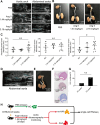
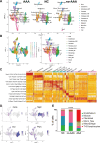
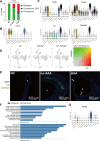
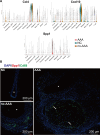
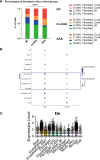
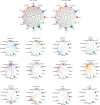
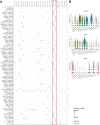
Similar articles
-
SM22α-Lineage Perivascular Stromal Cells Contribute to Abdominal Aortic Aneurysm.Circ Res. 2025 Jun 20;137(1):4-22. doi: 10.1161/CIRCRESAHA.124.325750. Epub 2025 May 15. Circ Res. 2025. PMID: 40371535
-
ALOX5 regulates vascular smooth muscle cells pyroptosis to affect abdominal aortic aneurysm formation.Sci Rep. 2025 Aug 9;15(1):29123. doi: 10.1038/s41598-025-14268-6. Sci Rep. 2025. PMID: 40781109 Free PMC article.
-
Caspase-11 deficiency ameliorates elastase-induced abdominal aortic aneurysm in mice by suppressing inflammatory response of macrophages.Am J Physiol Cell Physiol. 2025 Jul 1;329(1):C93-C106. doi: 10.1152/ajpcell.00716.2024. Epub 2025 Jun 3. Am J Physiol Cell Physiol. 2025. PMID: 40459928
-
Laparoscopic surgery for elective abdominal aortic aneurysm repair.Cochrane Database Syst Rev. 2017 May 4;5(5):CD012302. doi: 10.1002/14651858.CD012302.pub2. Cochrane Database Syst Rev. 2017. PMID: 28471523 Free PMC article.
-
Foetal haemoglobin inducers for reducing blood transfusion in non-transfusion-dependent beta-thalassaemias.Cochrane Database Syst Rev. 2023 Jan 13;1(1):CD013767. doi: 10.1002/14651858.CD013767.pub2. Cochrane Database Syst Rev. 2023. PMID: 36637054 Free PMC article.
References
-
- Kochanek K.D., Murphy S.L., Xu J., Arias E. Deaths: final data for 2017. Natl. Vital Stat. Rep. 2019;68:1–77. - PubMed
-
- Ortega R., Collado A., Selles F., Gonzalez-Navarro H., Sanz M.J., Real J.T., et al. SGLT-2 (Sodium-glucose cotransporter 2) inhibition reduces Ang II (Angiotensin II)-induced dissecting abdominal aortic aneurysm in ApoE (Apolipoprotein E) knockout mice. Arterioscler. Thromb. Vasc. Biol. 2019;39:1614–1628. doi: 10.1161/ATVBAHA.119.312659. - DOI - PubMed
Publication types
MeSH terms
Substances
LinkOut - more resources
Full Text Sources
Research Materials
Miscellaneous

